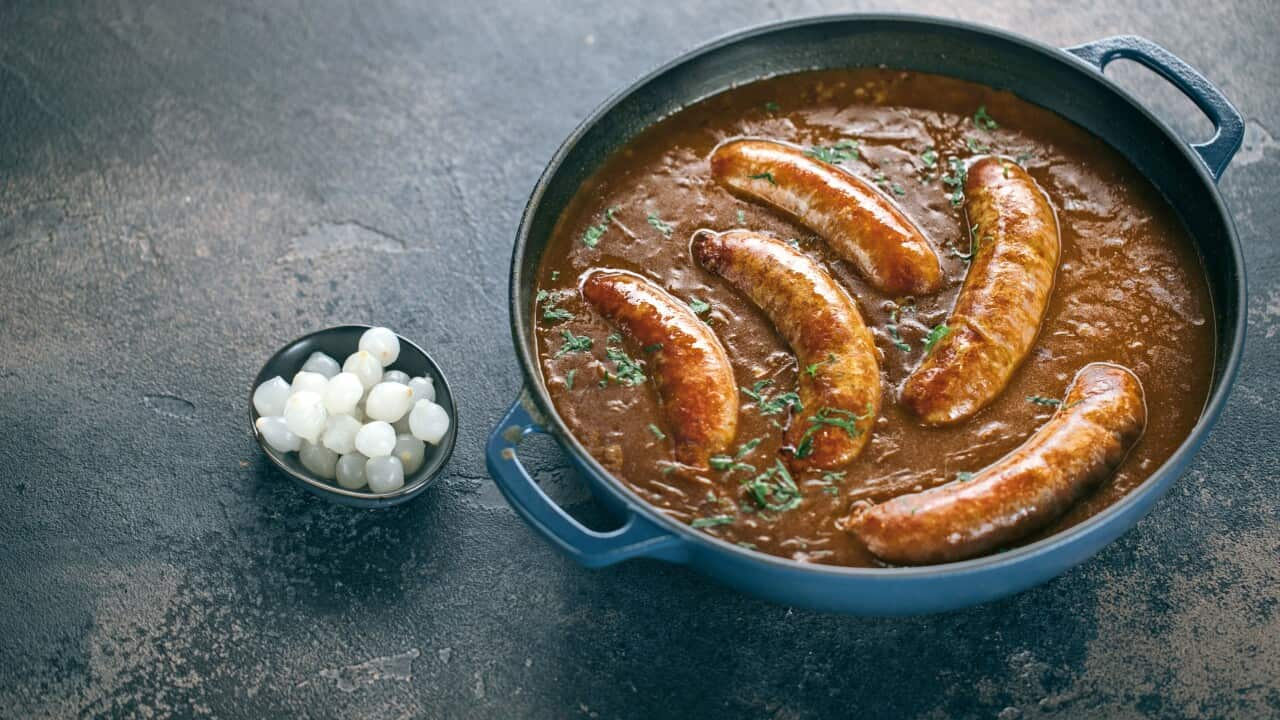--- Join chef Dan Hong in his kitchen where he cooks up global street food favourites in The Streets with Dan Hong, 8pm Thursdays on SBS Food and streaming free on SBS On Demand. For recipes and more head to the program page. ---
While the shapes, sizes, colours and flavours of sausages around the world seem endless, their essence stays the same.
You'll find some kind of sausage in many countries, and discovering their differences is a never-ending food journey. Sausage aficionados, add these to your bucket list.
CURRYWURST RECIPE

Currywurst
Andouillettes, France
The first recordings of andouillettes were in France in the 19th Century. They are made from pork intestine and tripe. They're shaped like a sausage, but their texture is not. They're much chunkier because the meat is roughly chopped as opposed to minced. Andouillettes are typically pan-fried and served with mustard or red wine sauce.
Andouilles, France
Andouilles are not to be confused with andouillettes, but they are similar and also come from France. Andouilles are smoked, seasoned sausages that include pork, onion and wine.
ADOUILLE RECIPE
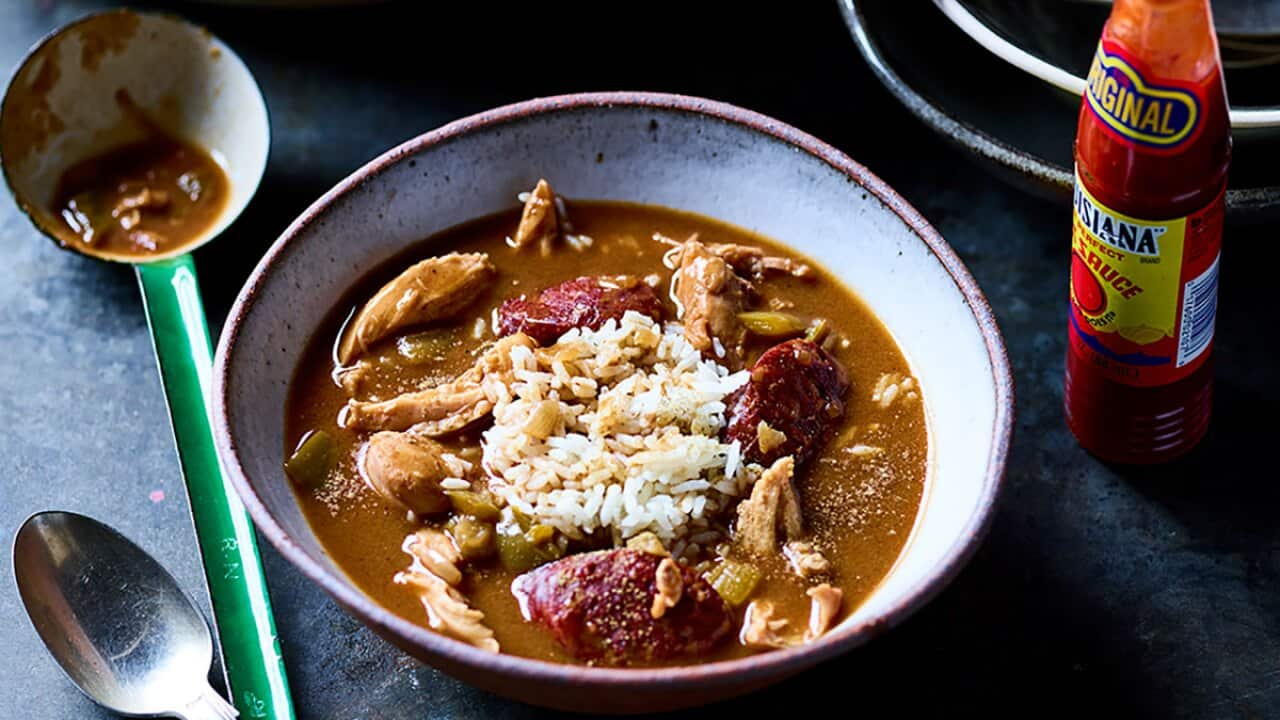
Rabbit and andouille gumbo
Andouilles are said to have made their way to countries such as the US. There, it's linked with Cajun cuisine and features in dishes such as gumbo. Boerewors, South Africa
Boerewors, South Africa

Source: SBS Food
Boerewors could be considered the national sausage of South Africa. The popular street sausage is based on minced beef or pork, which is flavoured with the likes of clove, coriander and nutmeg. Boerewors are usually served grilled and in a bun with mustard.
BOERWORS RECIPE
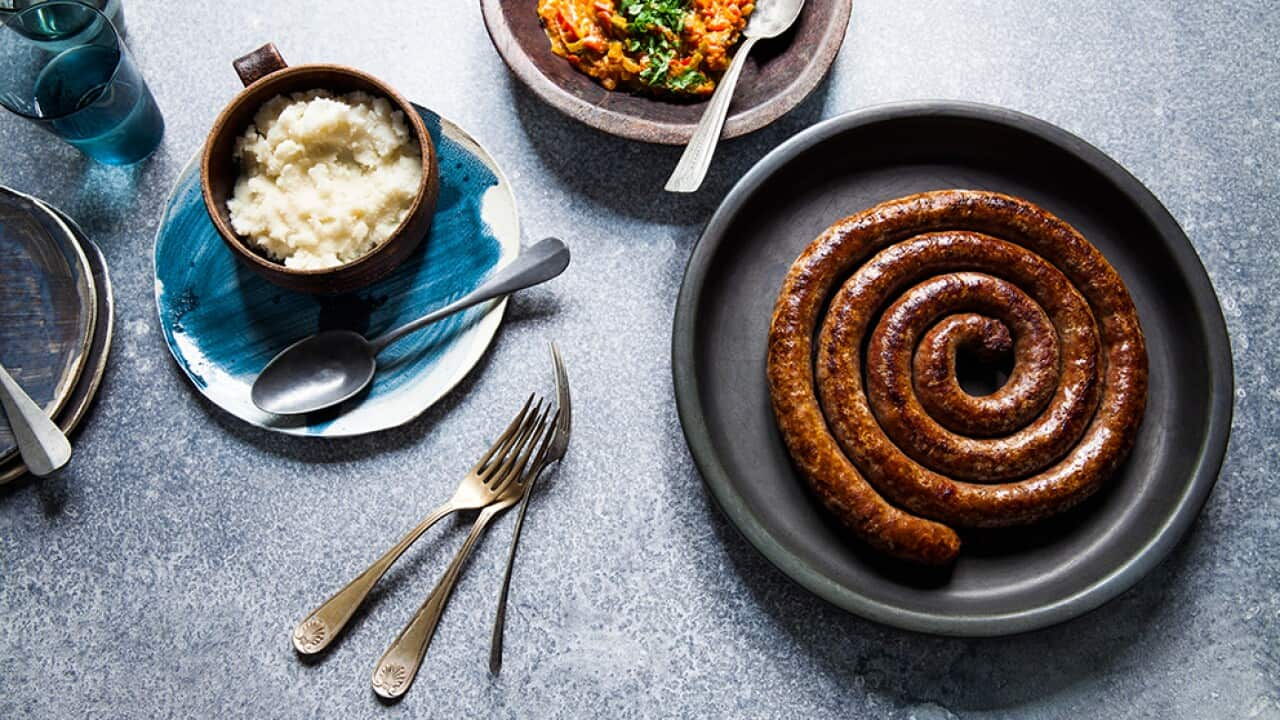
African beef sausages with pap and sheba (boerewors)
Cha lua, Vietnam
Sausages are not too common in Vietnamese cuisine, but the cha lua one is popular. This brings together ingredients such as pork, potato starch and fish sauce. The sausage mixture is wrapped in banana leaves and boiled. Cha lua is served in dishes such as banh mi, noodle soups and banh cuon (steamed rice rolls).
Chorizo, Spain
One of the heavyweights of the sausage world, chorizo, is a crowd favourite. The sausage was developed when the Spanish began exploring the Americas. A classic Spanish chorizo features pork, paprika, garlic and salt, but there are variations depending on which part of the world you're in.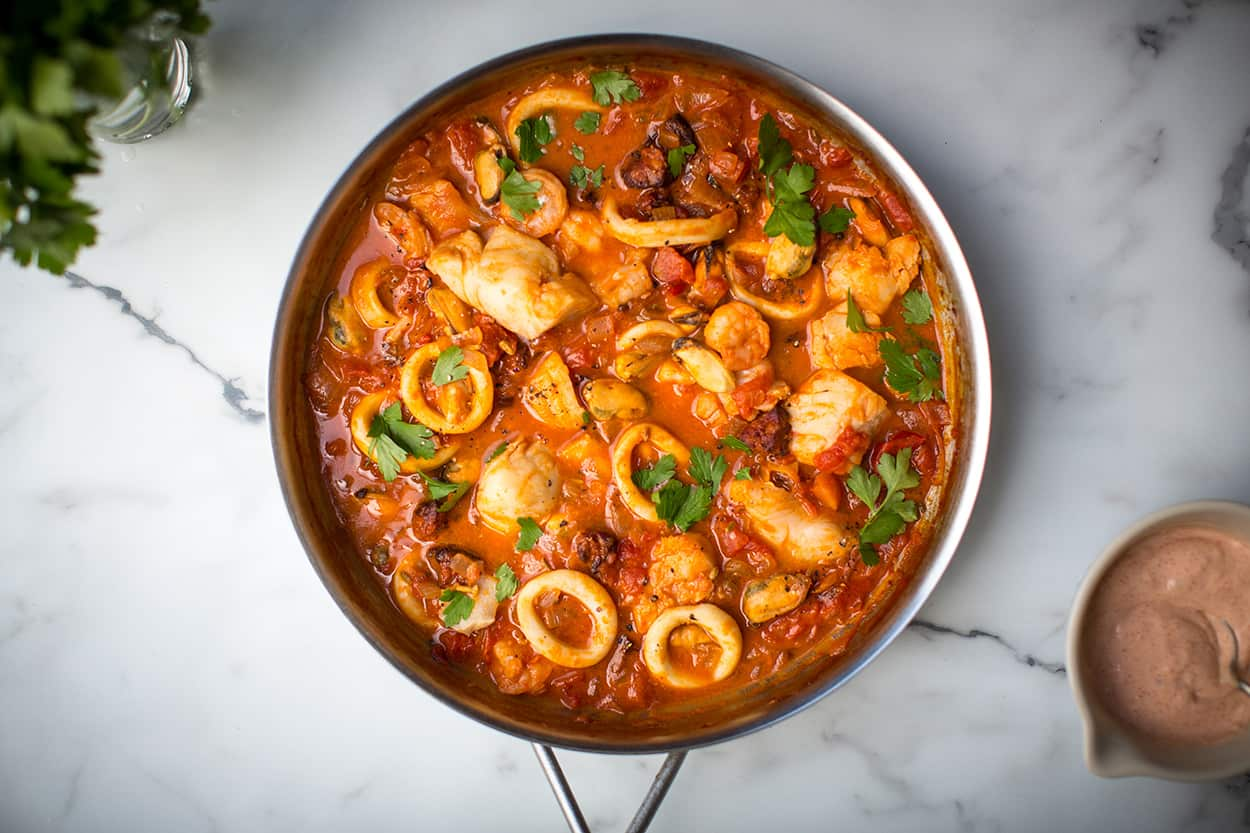 Frikandellen, the Netherlands
Frikandellen, the Netherlands

Chorizo is a popular ingredient in stews. Source: Donal's Meals in Minutes
Frikandellen is a skinless, deep-fried sausage that's popular in the Netherlands, It can be made of minced pork, chicken and/or beef. Allspice, nutmeg and onion powder gives it its distinctive flavour, and there's one magic item that brings everything together – cream. This binds the ingredients together and makes for a juicy sausage.
FRIKANDELLEN RECIPE

Party frikandellen
Kupati, Georgia
There are pork and beef versions of kupati, an aromatic Georgian sausage with cinnamon, coriander and garlic. The sausage is either grilled or fried and eaten with sauerkraut or sliced onions. It's often topped with pomegranate seeds.
Laulau, Hawaii
This Hawaiian sausage unites meat and fish. Laulau commonly features salted butterfish and pork, beef or chicken.
HAVE LAULAU IN PIZZA

Hunting the 'real' Hawaiian pizza - in Hawaii
It involves a similar production process to the cha lua, but laulau's mixture is wrapped in taro leaves and steamed. Laulau is enjoyed as a lunch or dinner dish, often with pasta or rice.
'Nduja, Italy
Hailing from Calabria, Southern Italy, 'nduja is a sausage so soft it's spreadable.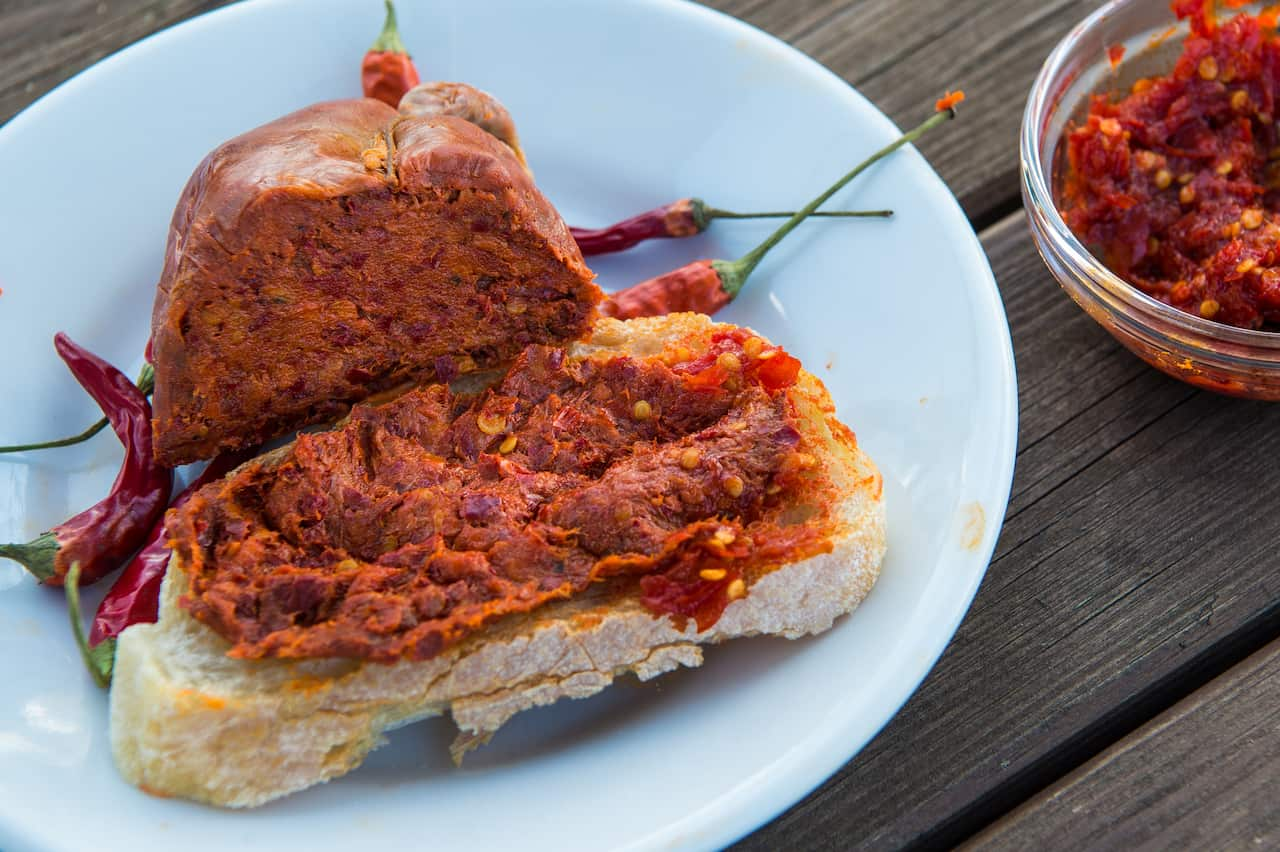 Pork meat, fat and roasted chilli peppers are minced together before they're encased and smoked. When it comes to serving time, the sausage mixture is removed from the casing. 'Nduja works particularly well in pasta sauces, spread out on a nice piece of bread, or better yet, in a toasted sandwich.
Pork meat, fat and roasted chilli peppers are minced together before they're encased and smoked. When it comes to serving time, the sausage mixture is removed from the casing. 'Nduja works particularly well in pasta sauces, spread out on a nice piece of bread, or better yet, in a toasted sandwich.

"It's made the same way that salami is made. The big difference is the amount of fat that you use for 'nduja makes it softer than salami and spreadable." Source: Getty Images
'NDUJA MOMENT

An ode to ‘nduja in all its goodness
Prinskorv, Sweden
Prinskorv, which translates to 'prince sausage', refers to these little sausages that are cut to resemble crowns. These spiced pork and veal sausages are particularly popular during Midsummer and Christmas. They can be enjoyed on their own, with mustard or in a classic Swedish casserole with potatoes, onions and cream.
Sundae, South Korea
Sundae (pronounced 'soon-day') is South Korea's answer to blood sausage, and it is peak street food.
A pig or cow's intestine holds an array of ingredients, which may include blood, minced meat, rice, vegetables or noodles, among others. Sucuk, The Middle East
Sucuk, The Middle East

Dip the sliced sundae and offal in salt or doenjang. Source: Audrey Bourget
This semi-dry, high-fat sausage beef sausage is filled with flavours such as cumin, paprika and garlic. Sucuk (pronounced 'sujuk') has to be dried for a few weeks before it's ready to eat. You can have it in thin slices, for breakfast with eggs, in a pita or as sausage rolls.
The sausage is popular in the Middle East, the Balkans and Central Asia.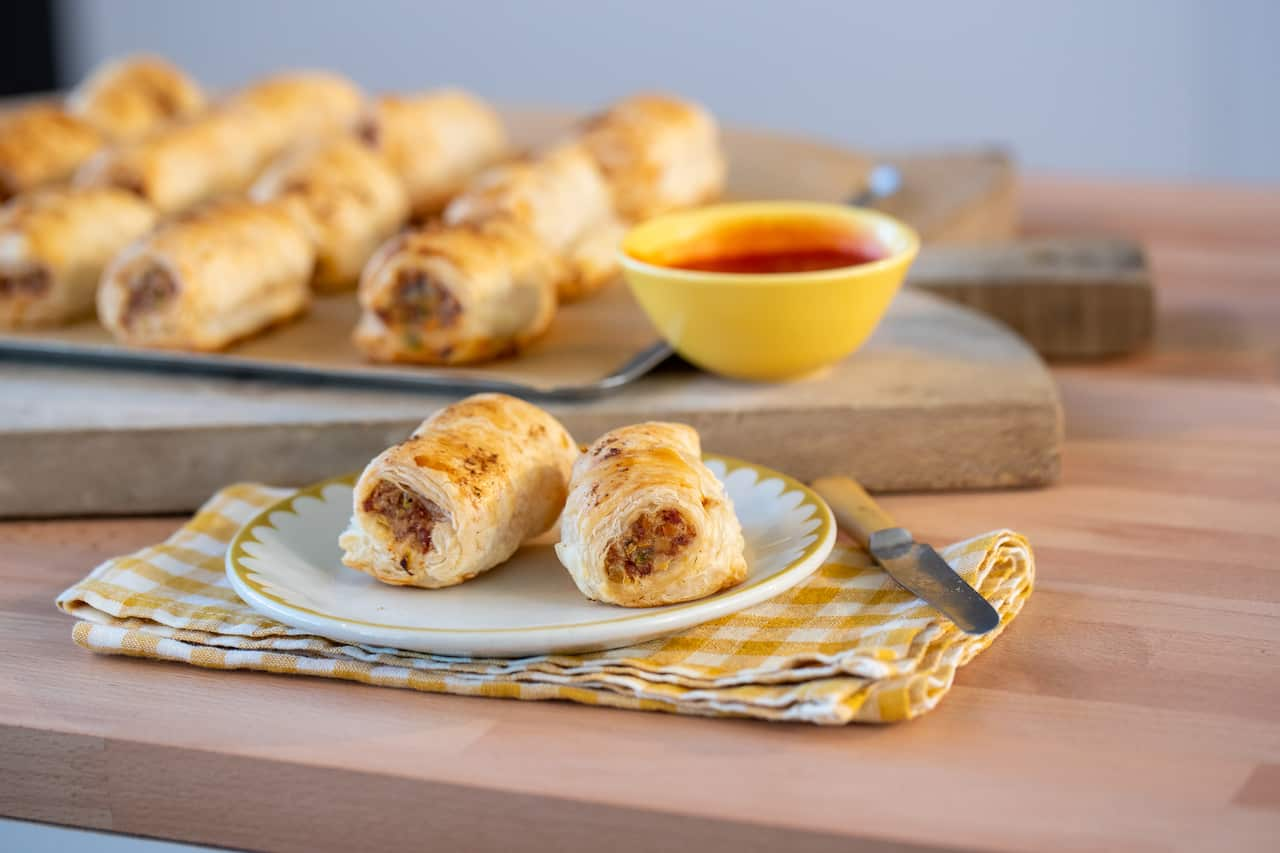 Weisswurst, Germany
Weisswurst, Germany

Sucuk sausage rolls. Source: SBS Food
The weisswurst is a Bavarian sausage. This sausage typically brings minced veal, pork parsley, lemon and spices (such as ginger and cardamon) together.
GERMAN SAUSAGES

Wonderful wursts: A brief guide to German snags
Weisswurst is typically enjoyed with a pretzel, some mustard and a beer. If you want to be really traditional, eat weisswurst for breakfast as many Bavarian people do.
Share
SBS Food is a 24/7 foodie channel for all Australians, with a focus on simple, authentic and everyday food inspiration from cultures everywhere. NSW stream only. Read more about SBS Food
Have a story or comment? Contact Us




